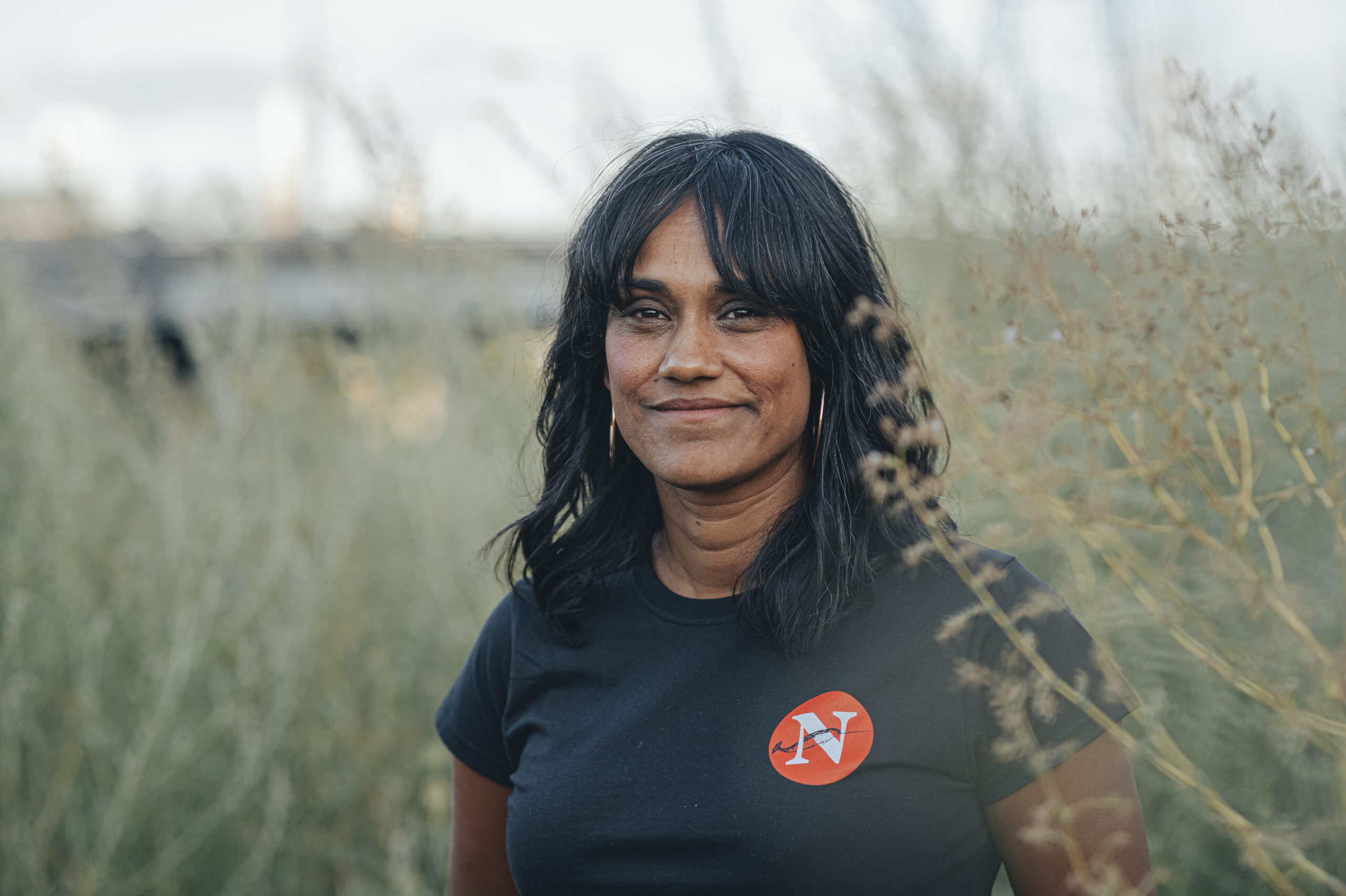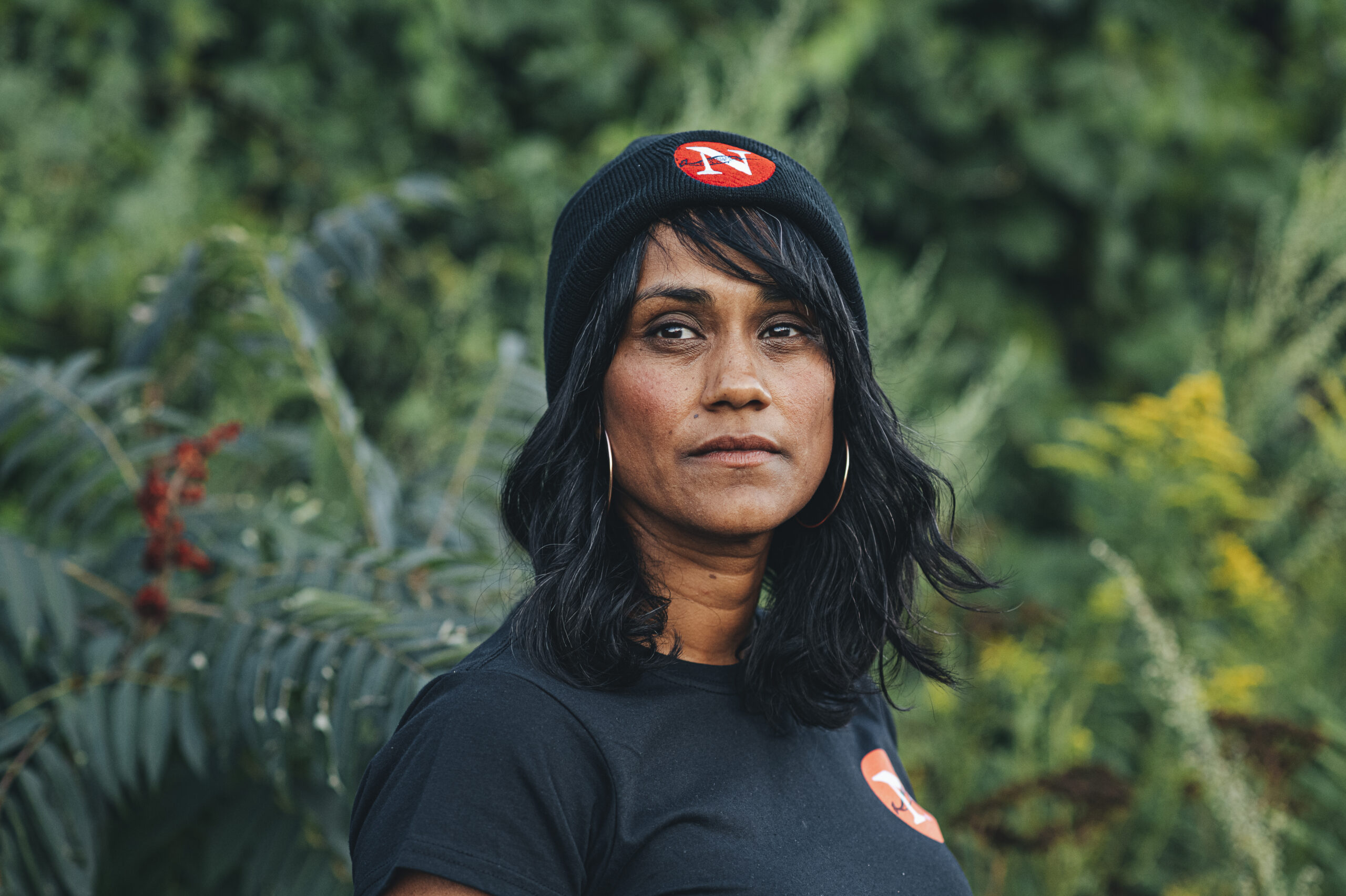
Canadians have another facet of national defence right under our noses
The current trade war with the U.S. means Canada must confront whether its domestic food...
Camping, canoeing, hiking: Denise Balkissoon says she hated all of these things as a kid and dreaded any class trips that involved dirt.
“I was very cut off from the natural world,” she says. “I think that for many people that come from places that have been colonized, the idea of progress is putting concrete over everything and then making a lot of money.”
She only realized later in life how disconnected her childhood had been from nature, and how much physical and mental harm that brought. Then she married a former scout, who insisted she go camping sometimes. It turns out she likes it, and now she’s comfortable doing real portage-and-thunderbox camping on purpose.
Now, as The Narwhal’s new Ontario bureau chief, Denise is determined to dig into how access to nature and all other aspects of environmental racism tie into the climate crisis.
“I think racism has separated people from the nature that we need to live,” she says. “We don’t really understand what is important about conserving it and protecting it, and how that matters to us as individuals, or to our families or our kids.”
“I want to help break that barrier down.”
Luckily, that is something Denise has a lot of experience doing. In her many years of working in journalism, she has been pushing the boundaries of the industry to be more inclusive of marginalized audiences. Whether it be as the executive editor of Chatelaine or a columnist and editor at The Globe and Mail, Denise has never shied away from asking hard questions about how journalism can reinforce marginalization and what needs to be done to address this problem.
“The important lesson there is that it’s not a static conversation,” she says. “Journalism is an evolving idea and it’s something that different forces should participate in.”
We chatted with Denise recently about all things journalism, whether that be the important lessons she’s learned (hint: it has to do with invoicing) and why she chose the field in the first place.
The unromantic reason is that I’ve always liked telling stories and crafting narratives, but “writer” would not have been acceptable to my parents, so I went to j-school. But very soon into j-school and my career, I became driven to tell the true stories of, at first, Toronto. Believe it or not, newspapers and magazines used to be even less interested in leaving the downtown core or including racialized perspectives in anything other than stories about crime and poverty. I grew up in the suburbs with immigrant parents, surrounded by other immigrant families and businesses and the misrepresentation and erasure in most Canadian journalism bothered me more, the more I saw how the sausage was made.
Relevant, wide-ranging, contextual, surprising, fact-based, expert, beautiful and even fun, depending on the topic.
Well, for freelancers, make sure you pay attention to your bookkeeping. I freelanced for 10 years and it’s always my advice when asked how to succeed at it, even though everyone is disappointed because it’s a boring answer. But you’re not going to be able to sustain yourself freelancing unless you’re disciplined about how much money you need, how much you need to get paid, invoicing on time, chasing your money, all that stuff.
More generally, the need to balance humility and confidence. I think we tell young journalists to be confident with politicians or other people in power, and that is necessary, but it took me longer to gain the confidence to stick up for myself and my ideas and expertise with editors.

There is an audience for the stories that interest me. The message from legacy media throughout my career has been that only certain stories told by certain people in certain ways will draw an audience. But every time I’ve ignored that, I’ve found a very big and enthusiastic audience that’s been waiting for meaningful and relevant journalism.
The responsibility of any journalist, which is to make sure that what you’re delivering to people is true — that it’s fact based, it’s fact-checked, that you’ve been fair to all ideas that might go into a story, which is not the same as false balance or false equivalency. My idea of objectivity isn’t pretending that you don’t have an opinion. It’s more about knowing what your own personal opinions and biases are and constantly interrogating them.
One responsibility of environmental journalism, specifically, is that a lot of it is science. And I love scientists, but in my experience as a journalist they’re not always great at distilling their expertise in a way that makes sense to someone who has 15 minutes to read a news story. So I think our responsibility is to ask scientists very basic questions that maybe make us sound dumb, but help us put their expertise into words that the average person who is not an environmental scientist will understand.

One of the big issues is, how are we going to pay for it? We’re two decades into the “Internet age” and yet a lot of places still haven’t figured out what to do, having lost the advertising-focused model of the pre-internet age. One of the reasons I was happy to join The Narwhal is because our founders, Emma Gilchrist and Carol Linnitt, have experimented with how to fund journalism. They’ve been successful at it and I find that super exciting.
As always, I think equity is a big issue. It’s one that has really been rumbling in Canadian journalism for years but has not been solved, despite the ingenuity and work of many people.
Building relationships with audiences is another huge problem that stems out of that inability for many institutions to change. That’s a problem, because many people don’t trust what you would see as the places that Canadians have traditionally turned to for news. That’s where a lot of disinformation fills the breach.
I have been doing yoga for 21 years.
This is perhaps not that random nor surprising, but I read a lot of books. I go back and forth between relaxing, easy fiction and more literary, “important” fiction. Right now I’m reading a mystery novel by the Irish writer, Tana French, which is more on the fun side of things.
One thing I did learn to do during the pandemic was how to trim my own bangs. It’s not something I would have done before.
Get the inside scoop on The Narwhal’s environment and climate reporting by signing up for our free newsletter. On March 17, federal Conservative Leader Pierre Poilievre...
Continue reading
The current trade war with the U.S. means Canada must confront whether its domestic food...

Residents and nearby First Nations wanted a new environmental impact assessment of the contentious project....

Growing up, Christian Allaire loved spending summers with his cousins in his grandma’s backyard, near...
